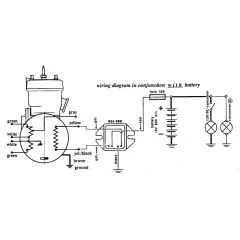jms
VIP MEMBER
- Joined
- Jul 26, 2005
- Messages
- 265
I've got a very early 1968 " Widow Maker" Commando that I picked up 18 years ago. At the time it was a work in progress and had been converted to a sort of Production Racer Replica. The wiring on the bike had been converted to negative ground and the charging system appears to be a two wire alternator combined with a Tympaniun voltage regulator and capacitor. All of the wiring has been beautifully done. I recently added the Production Racer bracket that is held in place by the obsolete upper triple tree handlebar brackets, which know incorporates the Wipac Tricon switch, Ammeter, and air lever. I've wired the Tricon and all lights and horns work. One odd thing that I did run across is that the Tympanium unit only has 3 wires. Two yellow, each going to the Alternator wires, and 1 black that goes to the capacitor. In all of my searches, I have yet to find a three wire Tympanium unit, so I'm not quite sure how this is working. That said I am having trouble wiring the ammeter in such a way that it will work. The original wiring diagram for this bike appears to show positive ground with the negative lead from the battery going to the plus side of the ammeter and the negative side of the ammeter going to the ignition switch and then the rectifier. Given the bike has been switched to negative ground I am assuming that the positive lead from the battery now goes to plus side of the ammeter but am unsure where the negative side of the ammeter should go as the rectifier has obviously been removed. Any ideas? Thanks in advance.

